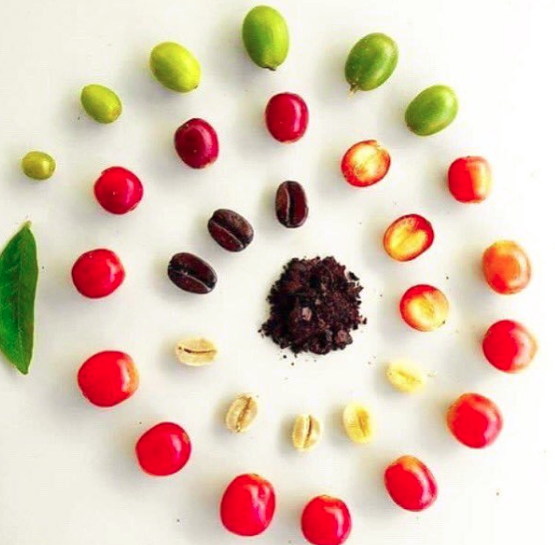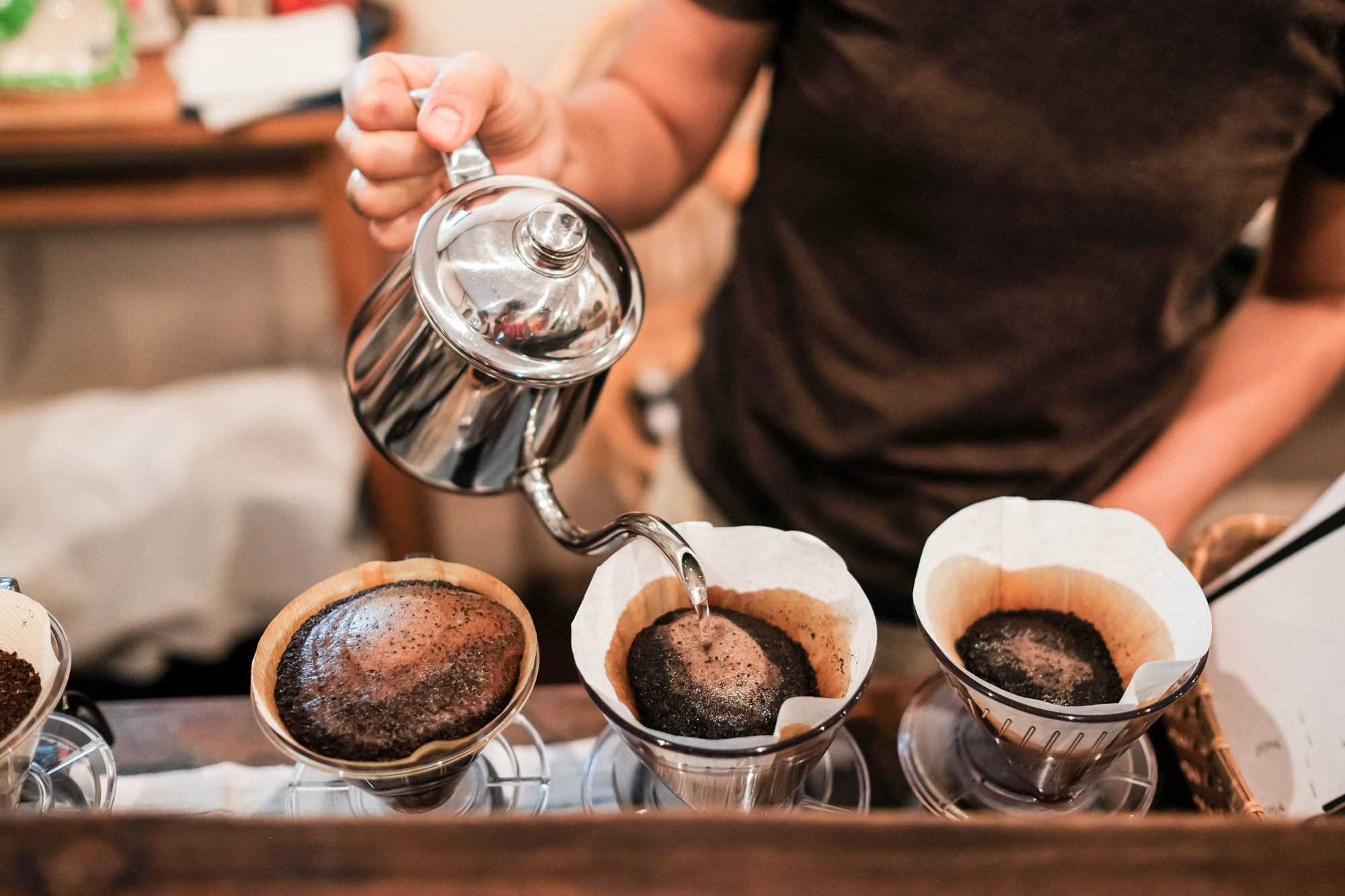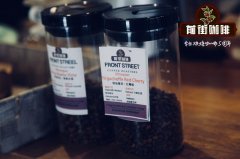How much impact do brewing techniques and techniques have on the quality of a cup of coffee?
Professional coffee knowledge exchange more coffee bean information please follow the coffee workshop (Wechat official account cafe_style)
"from seed to cup" is the third wave of belief in fine coffee. It is intended to promote the attitude that coffee should be taken seriously from the end of coffee growing until it is drunk by the drinker.
In recent years, however, it seems that a saying has been heard more often in the coffee circle:
"60% of the taste of coffee depends on raw beans, 30% on roasting, and 10% on cooking."

We don't know how this ratio is calculated. However, we should really examine whether this sentence is true or false.
Generally speaking, it is true that the more mistakes in the front end, the greater the impact on the final product. So now the market put a lot of focus on the selection of raw beans, baking, is also quite reasonable.

The problem is that if you put: "the taste of coffee, 60% depends on raw beans, 30% on roasting, 10% on brewing."
Choose the best raw beans and roast them most carefully to produce a 90-cent cup of coffee. "
It falls into a big trap in logical thinking: the more the front-end processor determines the success or failure of a cup of coffee, then the more the back-end part, the more it determines the "details" of a cup of coffee.

Coffee is not a paper that is divided into three parts, but more like a "composition" written in three paragraphs.
The first paragraph, that is, raw beans, has actually determined the limit of this cup of coffee from this place: farmers spend a lot of effort to plant high-quality ripe fruit, and the processor uses the first and most careful traditional way to treat raw beans, so that a batch of outstanding raw beans (green bean) can be achieved. In this part, science has decided that in the following baking process. What kind of flavor can be produced by "have a chance"?
And good baking is like the transfer part in the middle: baking simply synthesizes or degrades the original substances in raw beans into flavor substances. For a cup of coffee, it determines what kind of flavor can enter our coffee cup next. Without raw beans, it is impossible to expect roasting to produce follow-up compounds out of thin air. But on the other hand, some materials of raw beans may also be lost or cannot be synthesized because of baking trade-offs or mistakes.
As the final stage of coffee, that is, the part of brewing and tasting, how does this part actually affect a cup of coffee? Is it really because it accounts for only 10%, the impact is only 10%? The answer is obviously no.
For those of you who have seen movies, novels or anime, it should be easy to understand how lethal it is to a work. Of course, the same is true in the brewing and tasting stage of coffee.

"because the beans are well baked, they can be washed and tasted as good as they like."
This argument was rare in the early years when coffee culture was not as open and deep as it is now, but with the growth of the third wave of boutique, there is a growing trend. This argument cannot be wrong, but what is specious is even more frightening.
Most of the time, what experts call "random flushing" actually means "fixed powder-to-water ratio, temperature, grinding state, and cooking time." But only in this way, can you really make a good cup of coffee?
The answer is yes, but not meticulous.

At this time, some people must have asked: "the cup test is very good, how can it be worse?"
We said yesterday that coffee shops in places such as Australia or the United States often use batch brewing (batch brew) to make cups, that is, machines such as leakers and American machines are used to brew black coffee in large quantities to replace expensive labor.
Is it true that what is cooked by an American machine must be cooked by a barista?
The answer given by Australian coffee boss Scott Rao is a blow to our coffee shop:
"in the data of 1000 cups, the average batch brew score was significantly higher than the barista brewing score (pour over), not lower, and the number of delicious batch brewing (batch brew) cups was higher than that of the barista brewing (pour over)."

Of course, this data is not to deny the significance of the existence of baristas-Scott Rao also showed in the same experiment that "baristas can get about 5 points more flavor scores than batch brewing (batch brew) on extreme values."
What is the concept of flavor score of 5 points? It is probably the gap that the second place in the barista competition can not make it to the top 32.
In retrospect, do these baristas not know how to manipulate these so-called "parameters"? Of course I do, but there is always the same most important "trick" between man and machine.
What's the M.O.? The technique is the barista's "method of adjusting the coffee". The influence of the technique can not only make the average value directly lower than the machine, but also make the flavor closer to perfection. In terms of flavor, the technique is not unimportant.

As for whether the technique can be as stable as the machine? If you look at Japanese workers, German craftsmen and even Chinese chefs, you will never doubt it.
Scott Rao's numbers remind us: "Human instability is a sense of self-awareness as a barista."
It is true that good raw beans and good roasting can make a cup of coffee have a high limit of flavor, but the reason why coffee tastes bad is usually not that the limit is not high enough, but how much it can be experienced. To be sure, it is entirely possible to ruin all previous efforts by cooking.

Is it better than an American machine? It's not difficult.
But every cup tastes better than an American machine, it's very difficult!
How to make a good cup of coffee steadily is not only the first step as a barista, but also the primary goal of many coffee lovers.
The so-called stability, there are several elements we must pay attention to: powder-to-water ratio, temperature, grinding state, cooking time.
But in the advanced stage, stability alone is not enough, how to steadily cook "the perfect cup in mind" requires a complete combination of sufficient knowledge, delicate observation and a great deal of practice. These can be collectively referred to as the empirical crystallization of "techniques", which cannot be replaced by a large number of objective but "cold" mechanical parameters, which is the biggest difference between qualified baristas and excellent baristas.

Buying good beans is definitely the first step to success. As the saying goes, "A good beginning is half success."
But don't forget another sentence: "the last part is the hardest to finish."
Keep learning & practice is the key to making good coffee.
Photo Source: Internet
END
Important Notice :
前街咖啡 FrontStreet Coffee has moved to new addredd:
FrontStreet Coffee Address: 315,Donghua East Road,GuangZhou
Tel:020 38364473
- Prev

Mocha chocolate coffee espresso coffee with chocolate, frothy milk, syrup
Professional coffee knowledge exchange more coffee bean information please pay attention to coffee workshop (Weixin Official Accounts cafe_style) take iron Italian espresso add high concentration of hot milk and foam fresh milk, retain light coffee aroma and sweet taste, emit rich charming fresh milk fragrance, smooth and smooth entrance, is many girls favorite. Cappuccino. Italian espresso.
- Next

What is Manning? What's the difference between Manning and Blue Mountain?
What's the difference between manning coffee and blue mountain coffee? Blue Mountain Coffee: the taste is rich and mellow, and because of the perfect combination of sweet, sour and bitter coffee, there is no bitterness at all, only a moderate and perfect sour taste. Its flavor is rich, balanced, fruity and sour, and can meet people's various needs. In addition, the flavor of high-quality and fresh Blue Mountain coffee
Related
- Beginners will see the "Coffee pull flower" guide!
- What is the difference between ice blog purified milk and ordinary milk coffee?
- Why is the Philippines the largest producer of crops in Liberia?
- For coffee extraction, should the fine powder be retained?
- How does extracted espresso fill pressed powder? How much strength does it take to press the powder?
- How to make jasmine cold extract coffee? Is the jasmine + latte good?
- Will this little toy really make the coffee taste better? How does Lily Drip affect coffee extraction?
- Will the action of slapping the filter cup also affect coffee extraction?
- What's the difference between powder-to-water ratio and powder-to-liquid ratio?
- What is the Ethiopian local species? What does it have to do with Heirloom native species?

